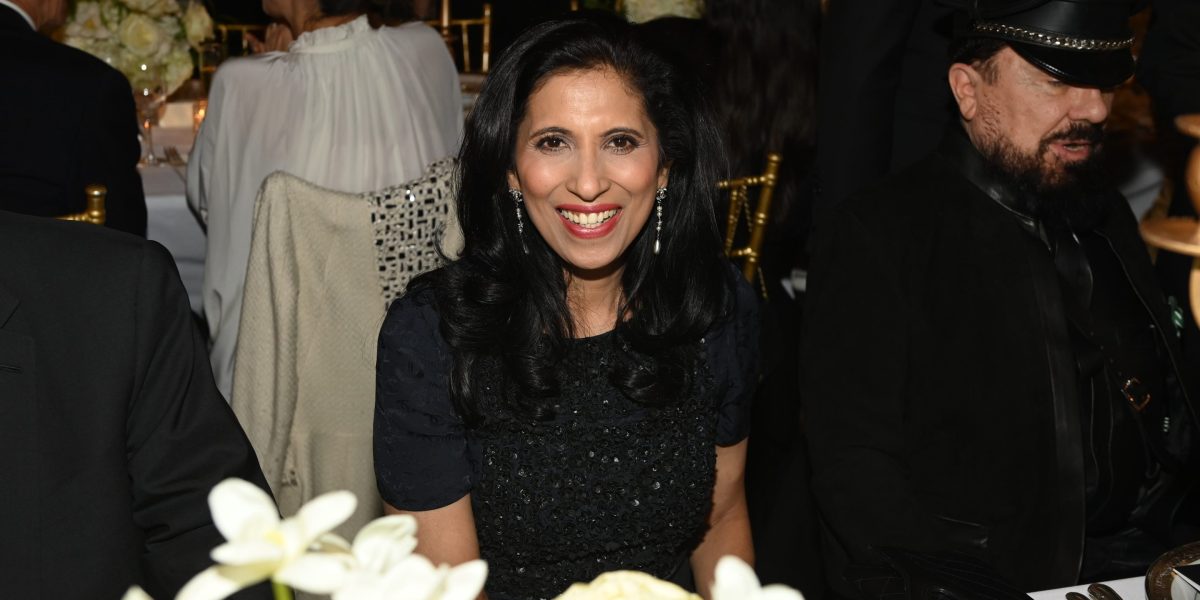When Leena Nair accepted the global CEO role of luxury giant Chanel in 2022, she had worked at Unilever for three decades and had ascended to the HR chief role.
But the journey to get there started on a train.
In a recent interview at Stanford Graduate School of Business, Nair spoke about how she was met with nay-sayers every step of the way—from when she chose to pursue engineering to when she decided to build a corporate career at Hindustan Unilever, the Indian arm of the consumer goods behemoth Unilever.
Getting her MBA was a key step that paved the way for her to pursue her ambition. There was one problem: her university of choice was on the east side of India, while she was based in the west. A 48-hour train journey away.
“As far as my family was concerned, that was another planet, so it used to take a lot to be able to go there and do that,” Nair said.
Her family did come around, but it wasn’t without hesitation.
“My father was a big sponsor for my education. He said, ‘I will educate you, but I can’t promise that you will have a career because I don’t know if attitudes are going to change,’” Nair said.
Nair knew she had a rare opportunity and wanted to make the most of it—and sure enough, she excelled at university and joined Unilever as a management trainee soon after her MBA.
It has since been an upward trajectory, as Nair went from being a factory manager for specific brands in India to an HR lead and head of diversity and inclusion. During the last five years of her career at Unilever, she served as its CHRO based in London.
“Lift as you climb has become a huge mantra for me. How do I ensure I make it easier for those who come after me?” Nair said during the interview.
Making a ‘quadruple transition’
Having spent her entire professional career with Unilever, Nair was surprised when she got a call from Chanel and didn’t want to pick up the call.
“I told my husband, Chanel has called, but I’m not going to even consider it. Are they crazy?” the London-headquartered company’s CEO said. “I just couldn’t say goodbye to Unilever.”
It took her nine months to eventually say yes to the role of leading one of the world’s biggest luxury companies, ranked #209 in Fortune 500 Europe.
It would be a massive leap: from fast-moving consumer goods to bespoke fashion and from Anglo-Dutch to French culture. Nair was also going from CHRO at a public company to the CEO of a private company, a rare transition in big business.
“A quadruple transition means you’re either very brave or very foolish,” she said.
Edward Berthelot—Getty Images
Nair had to unlearn Unilever’s fast-paced mass-production mentality and understand Chanel’s more nuanced, artisanal world, which produces high-end bags, apparel, and fragrances. At the French-origin company, artists take five years to work on dummy bags before they can work on real Chanel bags. During that period, Unilever dabbles with millions of products, ranging from iced tea to laundry detergent.
Despite the sharp difference between the two companies, Nair, who is nearing two years in the role, has made significant changes.
For one, Chanel has managed to buck the downturn that much of the luxury sector faces. The private company’s 2023 results saw a 16% jump in revenue compared to a year earlier. It’s now expanding its presence globally by investing in more boutiques.
Nair, among the few female CEOs in Europe, has increased the funding for Foundation Chanel, the company’s charity arm dedicated to supporting women, to $100 million. Chanel also recently ventured into sports sponsorship, following the trend among other luxury companies.
While reluctant spending continues to weigh on luxury brands, Nair’s vision for Chanel is more long-term. She wants the brand to be a pioneering force through her leadership even 100 years from now.
“I would like my 11-year-old self to be proud of the leader I’ve become,” Nair said.

